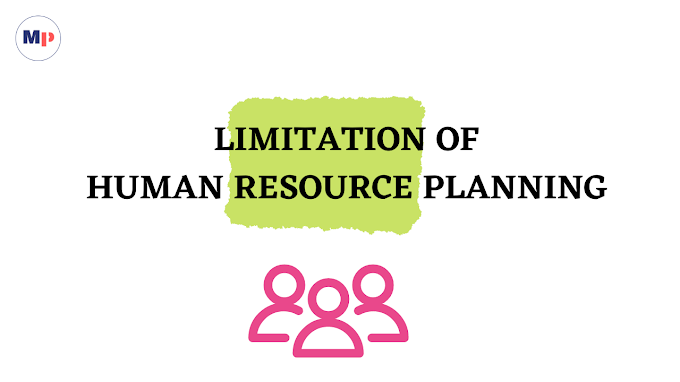
Introduction
Conducting
business today is highly challenging as it involves forecasting, planning,
organizing, instructing, coordinating and controlling.
Success in
business basically depends upon the skills in communication.
Meaning of
Communication
Communication
has been derived from latin word ‘Communis’ which means ‘Common’.
In its application, it means a common ground of understanding.
Communication
is a process involving the sorting, selecting and sending of symbols in such a
way to help the listener perceive and recreate in his own mind the meaning
contained in the mind of the communicator.
Definitions
“Communication is exchange of facts, ideas,
opinions, or emotions by two or more persons”.
W.H. Newman and C.F. Summer-
“Communication is the transmission and
interchange of facts, ideas, feelings, or course of action”.
Leland Brown –
“Communication is the process of meaningful
interaction among human being. It is a process by which, meanings are perceived
and understandings are reached among human beings .”
McFarland-
Essentials
of Good Communication
- Clarity:
There should be
clarity of ideas, facts, opinion, feelings and emotions in the mind of the
sender.
- Information:
First, collect
relevant information and be well informed about the message.
- Completeness:
The Subject
matter must be adequate and full, as limited information or limited
understand may lead to miscommunication.
- Emphasis
on Attention:
In order to make the message effective, the recipient’s attention should be drawn to the message communicated. Each one is different in behaviour,
sentiments and emotions, which determine the degree of attention. For this purpose, the superior must note that he himself should not expect from his subordinates what he himself does not practice. So, a manager cannot enforce punctuality if he himself is not punctual: Actions speak louder than words.
- Consistency:
One communication should not conflict
with the previous communication. Consistency can be achieved if the
communicator keeps in mind the broad objective, policies, and agendas of
the organization.
- Integration: Communication should be aimed at motivating people to take action as agreed upon. In this process, The superiors reply upon the subordinates and under the assumption that their integrity possessed by the subordinates. No communication may evoke a
response from the subordinates if their integrity is doubted. The superiors should trust the subordinates, accept their viewpoints and never doubt their intention, in executing the task entrusted to them.
- Accuracy: The communication medium should ensure accuracy in the transmission of messages. There is no logic in having a system that is cheap but faulty in transmitting messages. Hence,
written communication is desirable as words are spoken are liable to be misheard.
- Timeliness: All messages should be transmitted at the proper time. Any delay in communicating message serves
no purpose except to make them nearly historical document as it losses its importance after some time.
- Positive approach: Yet another requirement for
effective communication is its positive approach and the right mental
attitude.
- Feedback: Though the last but yet the most important principle to effective communication is to obtain feedback from the receiver. Feedback is a process to ascertain whether or not the receiver properly understood the message.
Functions
of Communication
Instructive Function: The instructive function invariably
and importantly deals with the commanding nature. Under this, the communicator
transmits with the necessary directives and guidance so as to enable them to
accomplish the task. In this, instructions flow downwards from top to the lower
level.
Integration Function: It is a unifying function under which
integration of activities endeavours. The integration function of
communication mainly involves bringing about the interrelationship among the various functions. It helps in the
unification of management functions.
Informing Function: Top management informs policies to the lower level through
the middle level. In turn, the lower level informs the top level the reaction
through the middle level. Information exchange flows vertically, horizontally
and diagonally across the organization. Becoming informed or informing others
is the main purpose of communication.
Evaluation Function: Examination of activities to form an
idea or judgment of the worth of task is achieved through communication.
Evaluating one’s own inputs or another’s outputs or some ideological scheme
demands effective communication process.
Directive Function: Communication is necessary to issue
directions by the top management or managers to the lower level. Instructing or
directing others cannot happen without communication.
Influencing Function: Communication is necessary for
influencing others. It implies the provision of feedback which tells the effect of communication.
Motivational forces in an individual are to be provided and then stimulated
through communication.
Incidental Neutral Function: Communication discharges several
incidental and neutral functions. Many pieces of communication are not directly
connected with the accomplishment of the objectives of an organization.
Communication may sometimes contribute indirectly to the organizational goals.
For instance, communication has to provide social contact within the
organization.
Teaching Function: The importance of personal safety on
the job has been greatly recognized. A complete communication process is
required to teach and educate workers about this. This will help avert
accidents, risks, etc. and avoid costs, procedures etc.
Image Projecting Function: A business enterprise cannot survive
by remaining aloof from the rest of society. There is interrelationship
and interdependence between the society and an enterprise operating in the
society. Public goodwill and confidence are necessarily created among the
public. It is the communication with its multimedia approach which has to
project the image of the firm in the society. An enterprise has to inform the
society about its goals, activities, progress and social responsibilities.
Orientation function: The employees of the organization are to be oriented with the
organizational structure. Communication helps to make people acquainted with
the co-employees, superiors and with the policies, objectives, rules and
regulations of the organizations.
Interview function: It is through interviewing people the
interviewer selects qualified and worthy people for the enterprise. Recruitment
process implies face to face or oral communication.
Other Function: Effective decision making is possible
when required and adequate information is supplied to the decision-maker.
Communication, either verbal or written, helps the process of decision making.
In general, everyone in the organization has to provide with the necessary
information so as to enable to discharge tasks effectively and efficiently.




